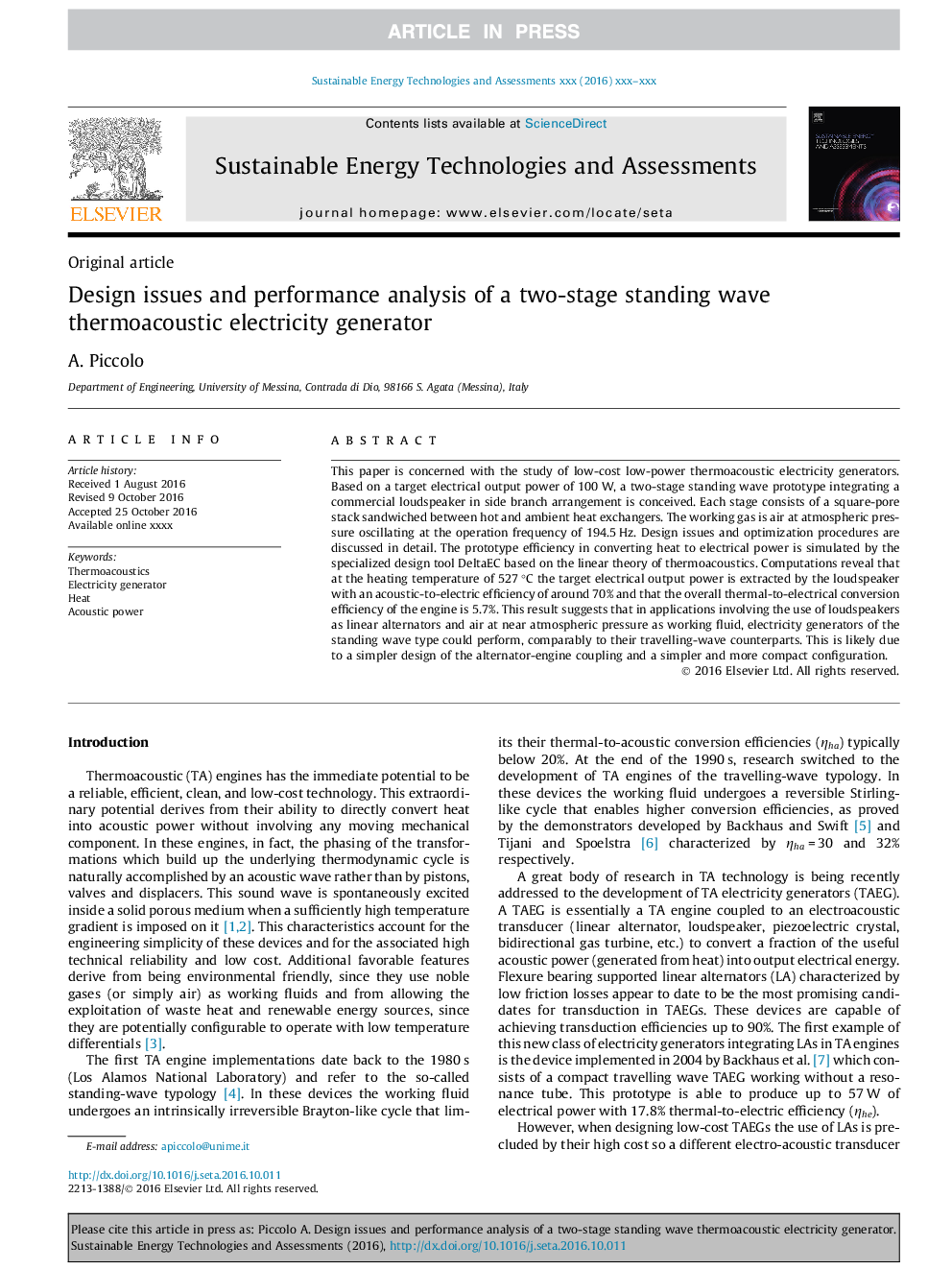| Article ID | Journal | Published Year | Pages | File Type |
|---|---|---|---|---|
| 8122666 | Sustainable Energy Technologies and Assessments | 2018 | 11 Pages |
Abstract
This paper is concerned with the study of low-cost low-power thermoacoustic electricity generators. Based on a target electrical output power of 100 W, a two-stage standing wave prototype integrating a commercial loudspeaker in side branch arrangement is conceived. Each stage consists of a square-pore stack sandwiched between hot and ambient heat exchangers. The working gas is air at atmospheric pressure oscillating at the operation frequency of 194.5 Hz. Design issues and optimization procedures are discussed in detail. The prototype efficiency in converting heat to electrical power is simulated by the specialized design tool DeltaEC based on the linear theory of thermoacoustics. Computations reveal that at the heating temperature of 527 °C the target electrical output power is extracted by the loudspeaker with an acoustic-to-electric efficiency of around 70% and that the overall thermal-to-electrical conversion efficiency of the engine is 5.7%. This result suggests that in applications involving the use of loudspeakers as linear alternators and air at near atmospheric pressure as working fluid, electricity generators of the standing wave type could perform, comparably to their travelling-wave counterparts. This is likely due to a simpler design of the alternator-engine coupling and a simpler and more compact configuration.
Related Topics
Physical Sciences and Engineering
Energy
Energy Engineering and Power Technology
Authors
A. Piccolo,
